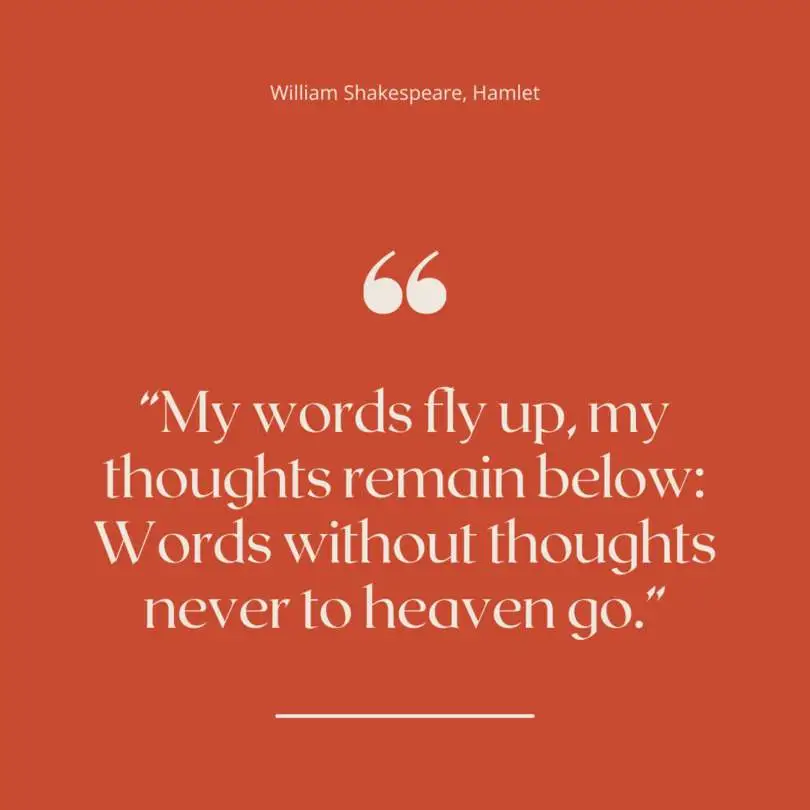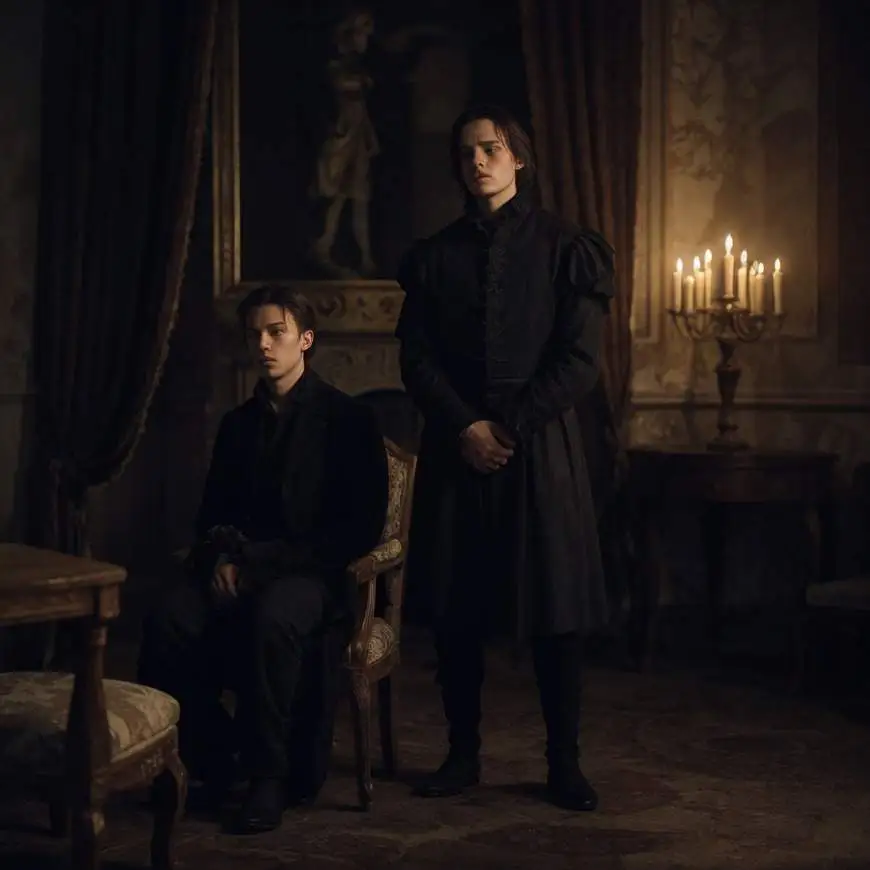“Hamlet” by Shakespeare: A Timeless Tale of Tragedy and Intrigue
William Shakespeare’s “Hamlet” is not just a play; it’s a journey into the depths of human nature, a riveting exploration of power, revenge, and the complexity of the human psyche. With its timeless themes and iconic characters, “Hamlet” remains a masterpiece that transcends the boundaries of time and culture.
A Tale of Tragedy Unveiled
The play opens with the ominous presence of a ghost, setting the stage for the tragedy that unfolds. Prince Hamlet, the brooding protagonist, discovers that his father, the king, has been murdered by his own brother, who now sits on the throne. This revelation sets in motion a chain of events that will lead to betrayal, madness, and ultimately, a tragic end.
The tragedy of “Hamlet” lies not just in the deaths that punctuate the play but in the unraveling of the human soul. Hamlet himself becomes a symbol of inner conflict and indecision, grappling with the weight of his father’s murder and the responsibility of avenging it. His famous soliloquies, such as “To be or not to be,” resonate across centuries, capturing the universal struggle with existence and the fear of the unknown.

Complex Characters in “Hamlet”: The Heart of the Drama
Shakespeare’s genius lies in his ability to create characters that are both larger than life and profoundly human. Hamlet, the tortured prince, is a multi-faceted character whose complexity has fascinated audiences for centuries. His internal struggle, coupled with his wit and intellect, makes him a compelling figure.
Ophelia, Hamlet’s love interest, is a tragic figure in her own right. Driven to madness by the betrayal of those she loves, Ophelia becomes a poignant symbol of innocence lost. Her descent into madness is both heart-wrenching and a commentary on the fragility of the human mind in the face of betrayal.
Claudius, the usurping king and Hamlet’s uncle, is a masterfully crafted antagonist. His Machiavellian schemes and guilt-ridden conscience add layers to the narrative, making him more than a mere villain. The play’s exploration of power, corruption, and the consequences of immoral actions remains as relevant today as it was in Shakespeare’s time.
The Language: Poetry in Motion
One cannot discuss “Hamlet” without delving into the unparalleled beauty of Shakespearean language. The play is a testament to the Bard’s mastery of words, with each line a carefully crafted piece of poetry. The language, while archaic to modern readers, possesses a rhythm and eloquence that elevates the entire experience.
Shakespeare’s use of soliloquies, in particular, allows the audience a window into the characters’ innermost thoughts. Hamlet’s soliloquy in Act 3, Scene 1, where he contemplates life and death, is a poignant example of the profound introspection that Shakespeare embeds within the text. The language becomes a character in itself, weaving a rich tapestry of emotions and ideas.
Hamlet: Themes That Transcend Time
“Hamlet” is more than a historical artifact; it is a mirror reflecting the perennial themes of the human condition. The play explores the complexities of familial relationships, the consequences of political intrigue, and the blurred line between sanity and madness. The theme of revenge, a driving force in the plot, raises ethical questions that resonate with audiences across cultures and epochs.
The play’s examination of mortality and existential questions adds a philosophical layer that invites contemplation. Hamlet’s musings on life and death, morality, and the nature of humanity are as relevant today as they were in the Elizabethan era. In this way, “Hamlet” achieves a timelessness that few works of literature can claim.
Theatrical Impact: A Play for the Ages
“Hamlet” is not meant to be read; it is meant to be experienced. The play’s theatrical impact has been profound, with countless productions bringing the characters to life on stage. The complexity of the characters, the intensity of the emotions, and the richness of the language make “Hamlet” a playground for actors and directors alike.
The play’s adaptability is evident in the myriad interpretations it has spawned. Whether set in the original Elizabethan era or a modern context, “Hamlet” retains its power to captivate audiences. Each production brings a fresh perspective, shedding new light on the characters and themes while staying true to the core of Shakespeare’s vision.

Famous Quotes from “Hamlet” by William Shakespeare
- “To be, or not to be: that is the question.”
- This is perhaps the most famous line from “Hamlet,” spoken by Hamlet in Act 3, Scene 1. It expresses Hamlet’s profound existential uncertainty and contemplation of life and death. He ponders the nature of existence and whether it’s better to live with the hardships of life or to end one’s suffering through death.
- “Frailty, thy name is woman!”
- Said by Hamlet in Act 1, Scene 2, this line reflects Hamlet’s feelings of betrayal and disappointment with his mother, Queen Gertrude, following her quick remarriage to Claudius after the death of Hamlet’s father. It indicates Hamlet’s perception of women as weak and morally frail.
- “The lady doth protest too much, methinks.”
- This line is spoken by Queen Gertrude in Act 3, Scene 2, during the play that Hamlet arranges to catch the conscience of the King. It’s a comment on one of the characters in the play within the play, who vehemently denies any wrongdoing. The phrase has come to mean that someone who denies something too vehemently may in fact be hiding their guilt.
- “Something is rotten in the state of Denmark.”
- Marcellus, an officer of the palace guard, says this line in Act 1, Scene 4, suggesting that all is not well at the highest levels of political power in Denmark. The statement foreshadows the revelation of corruption and foul play at the heart of the Danish royal court.
- “There are more things in heaven and earth, Horatio, than are dreamt of in your philosophy.”
- Hamlet speaks these words to Horatio in Act 1, Scene 5, after encountering the ghost of his father. This quote speaks to the limits of human understanding and the existence of supernatural phenomena. It underscores one of the play’s main themes: the disparity between appearance and reality.
- “Brevity is the soul of wit.”
- Said by Polonius in Act 2, Scene 2, as part of a verbose explanation to King Claudius and Queen Gertrude, this statement is ironic because Polonius is anything but brief. The line, however, emphasizes the value of being concise and to the point.
- “This above all: to thine own self be true.”
- Also spoken by Polonius in Act 1, Scene 3, as he gives advice to his son, Laertes. It’s a call for sincerity and authenticity in one’s actions. The quote suggests that staying true to oneself is above all other moral and ethical considerations.
Trivia about “Hamlet”
- Multiple Versions: There are three different early printed versions of “Hamlet”: the First Quarto (Q1, 1603), the Second Quarto (Q2, 1604), and the First Folio (F1, 1623). These versions contain significant differences in text, wording, and even character names, leading to much debate among scholars about which text best represents Shakespeare’s original intent.
- Source Material: Shakespeare was inspired by an earlier Scandinavian legend of Amleth, which he found in “Historiae Danicae” by Saxo Grammaticus, a 12th-century Danish historian. The story was later retold in a French version, which may have been closer to the version Shakespeare used.
- “To be or not to be” Misplaced: In the First Quarto, the famous soliloquy “To be, or not to be” appears earlier in the play than in later versions, which has led some to believe that the First Quarto is a “bad quarto,” possibly reconstructed from memory by an actor or a spectator.
- Influence on the English Language: “Hamlet” has contributed many phrases to the English language, including “brevity is the soul of wit,” “to thine own self be true,” and “something is rotten in the state of Denmark.”
- Ophelia’s Flowers: In the play, Ophelia hands out flowers with symbolic meanings. These include rosemary for remembrance, pansies for thoughts, fennel for flattery, columbines for ingratitude, and rue for regret. This use of flower symbolism was well understood in Elizabethan times.
- Famous Actors as Hamlet: Many of the world’s most distinguished actors have taken on the role of Hamlet, including Laurence Olivier, Richard Burton, Kenneth Branagh, and in recent times, Benedict Cumberbatch. Each actor’s portrayal brings new interpretation and nuance to the complex character.
- Longest of Shakespeare’s Plays: “Hamlet” is Shakespeare’s longest play, with over 4,000 lines, 29,551 words, and usually taking over four hours to perform in its entirety.
- The “Hamlet” Effect: The play has had a profound influence on literature, with many later authors writing works inspired by its themes and characters. For example, the American novelist John Updike wrote “Gertrude and Claudius,” which serves as a prequel to “Hamlet.”
- The Curse of “Hamlet”: The play is said to be cursed, and some actors refuse to say its name aloud, referring to it only as “The Scottish Play.” Superstitions around the play include the belief that real swords were used by mistake in dueling scenes, leading to actual deaths.
- Frequent Adaptations: “Hamlet” has been adapted into numerous films, television programs, and even operas. Notable film adaptations have been directed by Laurence Olivier, Kenneth Branagh, and Franco Zeffirelli.
Criticisms and Challenges
No review is complete without acknowledging the potential criticisms and challenges posed by a work. Some modern readers may find the language of “Hamlet” daunting, requiring a level of concentration to fully grasp its nuances. Additionally, the intricate plot and multitude of characters can be overwhelming, especially for those new to Shakespearean drama.
The character of Hamlet, while a fascinating study in psychology, can also be frustrating for some audiences. His indecisiveness and complex internal struggles may alienate those seeking a more straightforward hero. However, it is precisely these flaws that make Hamlet a more authentic and relatable figure, adding to the play’s enduring appeal.
Conclusion “Hamlet”: A Masterpiece That Endures
In conclusion, “Hamlet” stands as a timeless masterpiece that continues to enthrall and provoke thought centuries after its creation. Shakespeare’s exploration of the human condition, coupled with the play’s theatrical impact, ensures its place as one of the greatest works in the English literary canon.
The characters, with their flaws and complexities, resonate with audiences on a deeply human level. The language, poetic and profound, elevates the play to a realm of artistic brilliance. “Hamlet” is not just a play; it is a journey into the recesses of the human soul, a mirror reflecting our own struggles, doubts, and triumphs.
As we continue to grapple with timeless questions of power, morality, and the meaning of life, “Hamlet” remains a guiding star, illuminating the path of introspection and self-discovery. It is a play that invites us to confront the complexities of our existence and, in doing so, transcends the boundaries of time and culture. In the grand tapestry of literary achievement, “Hamlet” stands as a testament to the enduring power of storytelling and the eternal relevance of the human experience.